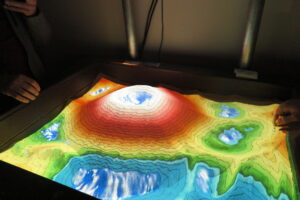
Over the years, the ULCGIS has offered accredited Geographic Information Systems coursework to students from a variety of disciplines including Anthropology, Biology, Business, Engineering, Geography, Public Health, Justice Administration, and Urban Planning. In learning the principles of GIS – and the application of geospatial analysis to geographic phenomena – the students can apply new skillsets to their individual areas of concentration.
The certificate is housed in the College of Arts and Sciences but also encompasses other colleges. It is intended for students who wish to retain their planned major and minor, yet enrich their undergraduate education in a skilled manner that better prepares them for prospective employers or graduate school. The certificate, awarded upon graduation, will offer the student an additional layer of credentials as they seek gainful employment in this fast and growing field.
You must also apply to graduate with the certificate on Ulink at the beginning of the semester in which you intend to graduate with your major. You must fill out two graduation applications since this certificate is non-degree seeking. When you are ready to graduate – the link to graduate with the certificate should appear just under the link to graduate with your major.
